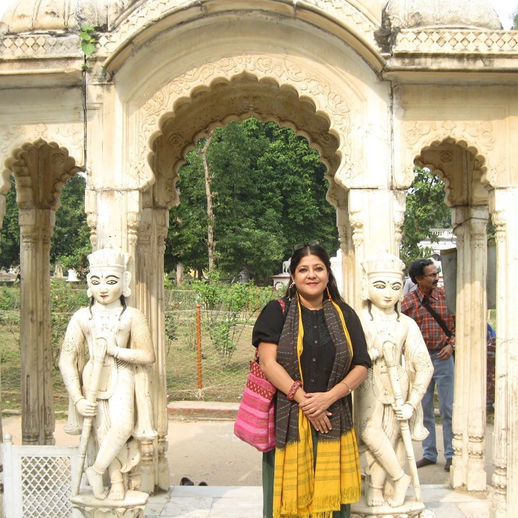Kangla Fort Museums, Imphal, Manipur:
Was at Imphal , Manipur on a sultry July ( 2018 ) accompanying my husband for a filmmaking workshop. I took a day off to visit the famous Kangla fort and other heritage sites of Imphal. One of the ancient names for Manipur was Kangleipak and Kangla meant palace. Every Salai (Kingdom) had one. They were the first target for conquering any kingdom, dethroning any king.
The red and white Victorian building inside the huge, sprawling Kangla Fort of Imphal easily catches one’s attention. It houses the Kangla Museum, established in 2004 and inaugurated in 2009 for the public. As I strolled through it on a sultry July afternoon, montage of Manipur’s history and culture unfolded before my eyes. The museum has two sections. While one has portraits of rulers, changing maps of the state in different periods and a model of the Kangla fort, the other displays archaeological finds from the Kangla fort area.
Photograph 1 -Kangla fort itself is like a huge, sprawling museum complex with buildings and ruins from different eras as displays. It records continuous human occupation from 33 C.E till now. The ruins of the 17th Century citadel stood tall and proud against the rain-washed July sky
Photograph 2 - It is guarded by Kangla- Sha or mythical dragons, emblem of Manipur and protective deity of Meitei kings. While there is a huge pair of sculptures outside, there is a terracotta plaque inside the museum. Was cautioned when I accidentally sneezed in front them!
Photograph 3 - There are two museums inside Kangla fort – a fort museum that is devoted to the political- administrative history of the fort in particular and an Archaeological Museum. Here is me and a student from the film institute (my guide around Imphal ) in front of the red and white Victorian building of the fort museum.
Photograph 4 – A symbolic, totemic relief sculpture caught my attention inside the fort museum. Called my Manipuri friend Meena Longjam for clarification and came to know that this intriguing ensemble of creatures – human, elephant, cow, boar, tortoise and snake, represents the seven stages of human evolution according to Meitei mythology. Snake is the heraldic emblem of serpent God - Ibudhou Pakhangba.
Photograph 5 – Have heard about the Manipuri boat race and could relate Originally held during Hiyangei Tha, the Manipuri Lunar month October- November it begins with ritualistic offering to Lord Sanamahi, ruling deity of every Manipuri household.
Rajasri is a Kolkata based Art Historian, who teaches, writes and translates.
Deeply interested in cultural history from sculptures to cuisine, she enjoys films, literature, music and travelling




















